Get Fit, Fuel Up: The Best Fitness and Nutrition Products to Power Your Running
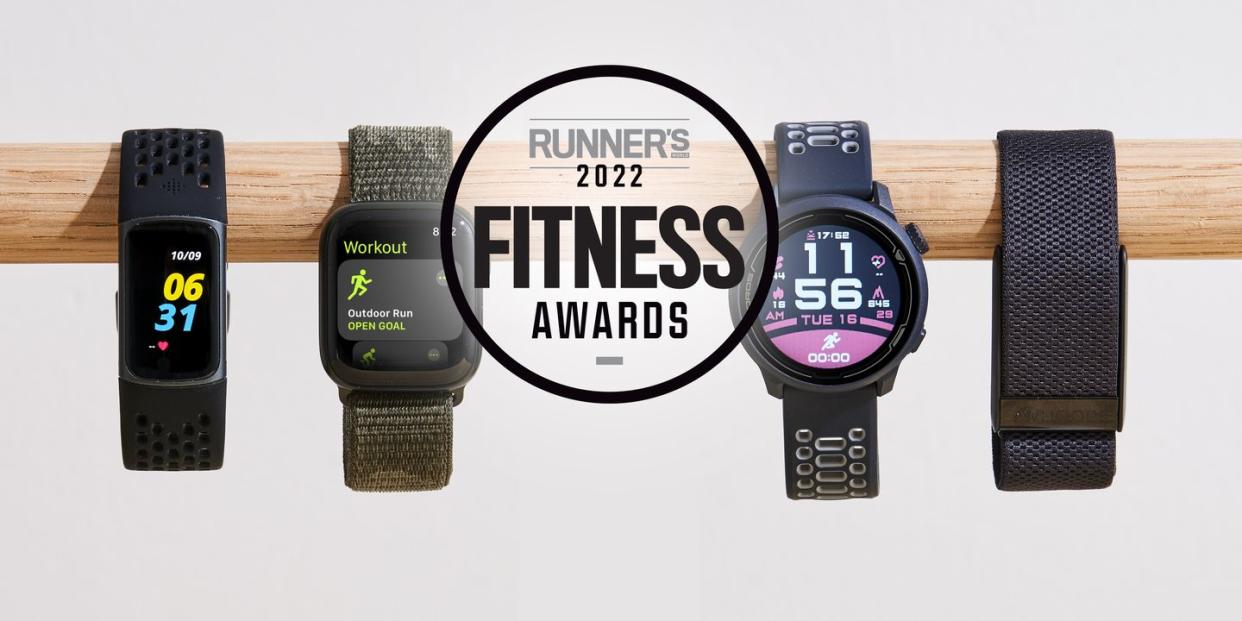
"Hearst Magazines and Yahoo may earn commission or revenue on some items through the links below."
One lesson we’ve learned over the past year: You can get a solid workout done without leaving home. And there’s plenty of gear out there to add some spice to your sweat sessions and help take your fitness to new levels. Plus, lots of food options to fuel your every mile.
So we tested the products designed to give you an edge in your fitness, helping you get stronger, more powerful, and faster on your feet. Here, we’ve selected the best tools to support you through your training and across the finish line with a shiny new personal record.
Best Cardio Machines
Best Gear for Your Home Gym
Best Fitness Apps
Best Digital Home Gyms
Best Recovery Tool
Best Training Shoe
Best Trackers
Best Youtube Workouts
Best Fuel

Getting a cardio workout indoors has its perks. Of course it protects you from the elements, but it can also offer a safer way to exercise when winter hits and the streets get slick. Many machines also provide pre-programmed workouts and enthusiastic instructors to keep motivation high, and by mixing up your cardio method with equipment beyond the treadmill, you also reduce your risk of injury—the beauty of cross-training.
“[Cross-training] is good for working the same large muscle groups you use when running, but in different ways, to create variety and better balance and to change the repetitive stress of running,” says Brooke Carmen, DPT, CSCS, a physical therapist at Whole Body Health Physical Therapy in Portland, OR. Many runners get injured from imbalances or overuse, and cross-training can help you mitigate those causes, Carmen says.
Dan Giordano, DPT, CSCS, chief medical officer for Bespoke Treatments in New York City, agrees, adding that activities such as rowing, stair climbing, biking, and using the elliptical all improve your cardio while taking impact off your muscles, bones, and tendons. Doing these other forms of exercise can also help you train different energy systems of the body, he says. “You have to work on anaerobic fitness—or quick bursts of energy—to improve aerobic.” Translation: Speed intervals on the rower or bike could help you check off more miles on the road.
Snag all these benefits by buying your own cardio machine. These three stand out for their value and versatility, particularly for runners.
Best Treadmill
We love Technogym’s compact tread on its own, but recommend that you BYOT (Bring Your Own Tablet) for a next-level run. The integrated sturdy stand anchors an Apple or Android device to the treadmill’s frame so you can swipe through a library of workouts in the Technogym Live app. Hop into a trainer-led bootcamp class, toe the line in a virtual Zwift race, or take your run “outside” by putting some miles on the Gibb River Road in the Australian Outback with the run simulator. If you’d rather revisit routes closer to home, you can do that too. Sync previously recorded GPS data from Garmin, Strava, Runkeeper, or MapMyFitness, and the Technogym will replicate runs on your favorite neighborhood loop, right down to the pace (up to a 4:50 mile) and incline (between 0 and 12 percent).
Best Stair Climber
Carmen loves climbing stairs for how much the movement fires up the glutes and hamstrings while targeting the quads—a great way to build strength for speed. While she suggests doing intervals of one minute on and one minute off, you don’t have to worry about creating your own workout with the CLMBR. Thanks to the built-in tablet, you get more than 400 workouts—based on the machine and off—with new ones added every week. The CLMBR also allows you to set the resistance, as well as use your arms or just focus on the legs.
Best Rower
Both Carmen and Giordano tout rowing as a great full-body cardio workout, one that involves not only your legs for driving power, but your core and upper body too (which also need to be strong on the run). With the CityRow rower, water resistance delivers a super smooth stroke; plus, a nearly 20-inch touchscreen offers hundreds of classes, including recently launched live classes that feature instructor feedback in real time. Choose a workout strictly for the rower, or opt for one with moves off the machine—there are plenty of options for different levels, durations, and formats. You can also see such metrics as strokes per minute (or stroke rate), intensity, power, and pace per 500 meters. Set weekly workout goals too, and earn badges for hitting personal records, like fastest split time.

Dumbbells, kettlebells, and resistance bands have been go-to gear for home gyms for good reason: You can find them relatively easily (quality is similar across many brands) and at a reasonable price (especially resistance bands). Plus, you have tons of options for how to use them to build strength and power for better running. But if you want to add new challenges to your at-home routine (think: enhanced stability tests, more intense intervals, and next-level weight training), these three tools should have a place on your mat, stat.
Best Free Weights
For a fun and functional way to strength train, look no further than these free weights made of real firehose and filled with little steel balls. Thanks to the design and weights ranging from 5 to 50 pounds, you can push, pull, toss, drag, or move with resistance in any plane—perfect for total-body strength building and core stability (must-haves for runners). For $10 per month, you also get access to plenty of workouts on the website that incorporate these weights.
Best Barbell
It’s hard to find a barbell that has easily switchable weight plates and that also doesn’t take up much space at home. This one checks both boxes. The square-shaped weights easily slide on and off the bar, but the clamp technology means they won’t slip while you’re lifting. Use the bar for strength moves like deadlifts or overhead presses. The weight plates can also be used as free weights, so you can incorporate them into moves like lateral raises or suitcase lunges. Consider it a two-in-one deal and the ideal way to turn your weightlifting routine up a notch.
Best Cardio Gears
Jumping rope adds power to your run by strengthening the legs, adding spring to your step, and improving your cardio. You could opt for any inexpensive rope on Amazon, but with this set, you get a high-quality 1/4- and 1/2-pound jump rope with comfy, no-slip handles. You also gain free access to the CrossRope app, featuring tons of jump rope workouts with bodyweight exercises mixed into the routines, plus challenges and skill tutorials. This set is worth the extra cash for the endless options on how to use the rope, as well as the extra burn it adds to the body with the weight.

Take these workouts with you no matter where you travel. Each app offers a particular specialty that’ll keep you moving and getting stronger.

Turn your home gym into a full-blown fitness studio with equipment that provides both the gear and the instructor-led workout. These machines not only help you build strength and endurance through weight training and HIIT, but also offer up plenty of cross-training options, from yoga to Pilates. Find the one that fits your fitness level, your favorite workout style, and your budget.
Best for Strength Training: Tonal
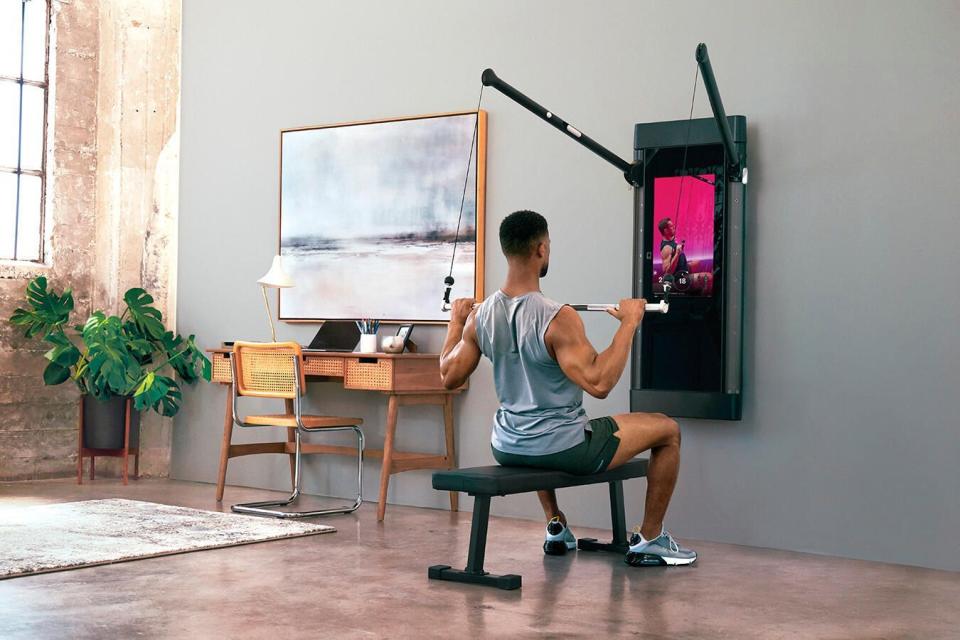
When you’re first starting out with weight training or looking to hit some PRs, it’s tough to know what weights to use. But Tonal makes it easy—and more fun. Once you get the machine installed at home, you’ll go through a weight test that includes four exercises: seated lat pull down, seated overhead press, bench press, and neutral grip deadlift. This scores your upper-body strength, core, and lower-body strength based on how fast you move through the exercises, your range of motion and power output, and where you struggle. This test also determines the starting weight for moves across the platform.
Besides helping you get started with weight training, Tonal can also take your current training to the next level, thanks to smart features like eccentric mode, which adds more weight to the lengthening phase of a move. The device also has sports-based weeks-long programs, designed to help athletes like runners train for better performance. You can also choose one-off workouts aimed at improving your strength, endurance, power, or mobility on the run.
In addition to programs and on-demand workouts, Tonal also has live classes scheduled a few times throughout the day. Pick the type that motivates you most, or switch it up depending on how you feel that day. If you already started a program but want something new, the system also suggests workouts that complement what you’re doing. ($2,995 plus an additional $495 for the smart accessories, including the handles, bar, rope, bench, roller, and mat; $49/month for Tonal membership)
Best for Personal Training: Mirror
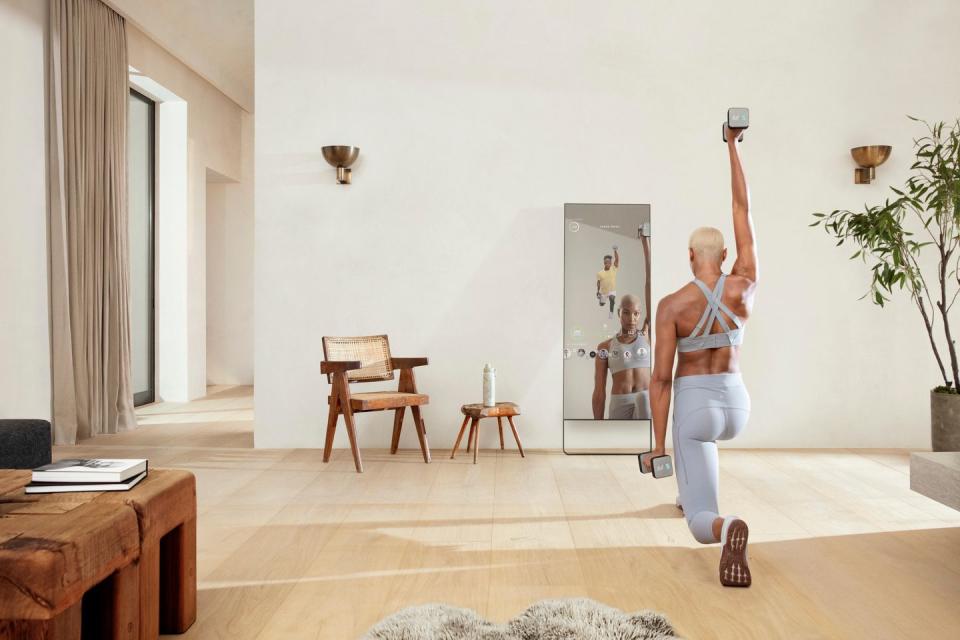
Mirror incorporates personalization into its platform by offering up a weekly program based on your individual goals and preferences. In addition to live and on-demand classes, you also have the option to book a virtual personal training session ($40/session), which allows for two-way audio and video with a trainer who can then offer feedback on form and also feed you words of motivation to push you through your workout.
If competition drives you, Mirror also has a feature in which you earn points for hitting certain target heart rate zones. Aim to beat other Mirror members’ numbers or simply try to beat your own. This past fall, Mirror also introduced Mirror Weights—including dumbbells and ankle weights—which pair with the device to count reps, offer up form corrections, and recommend the amount of weight to lift for each exercise. ($1,495 for the device, $50+ for the weights; $39/month for digital Mirror membership)
Best for Workout Programs: NordicTrack Vault
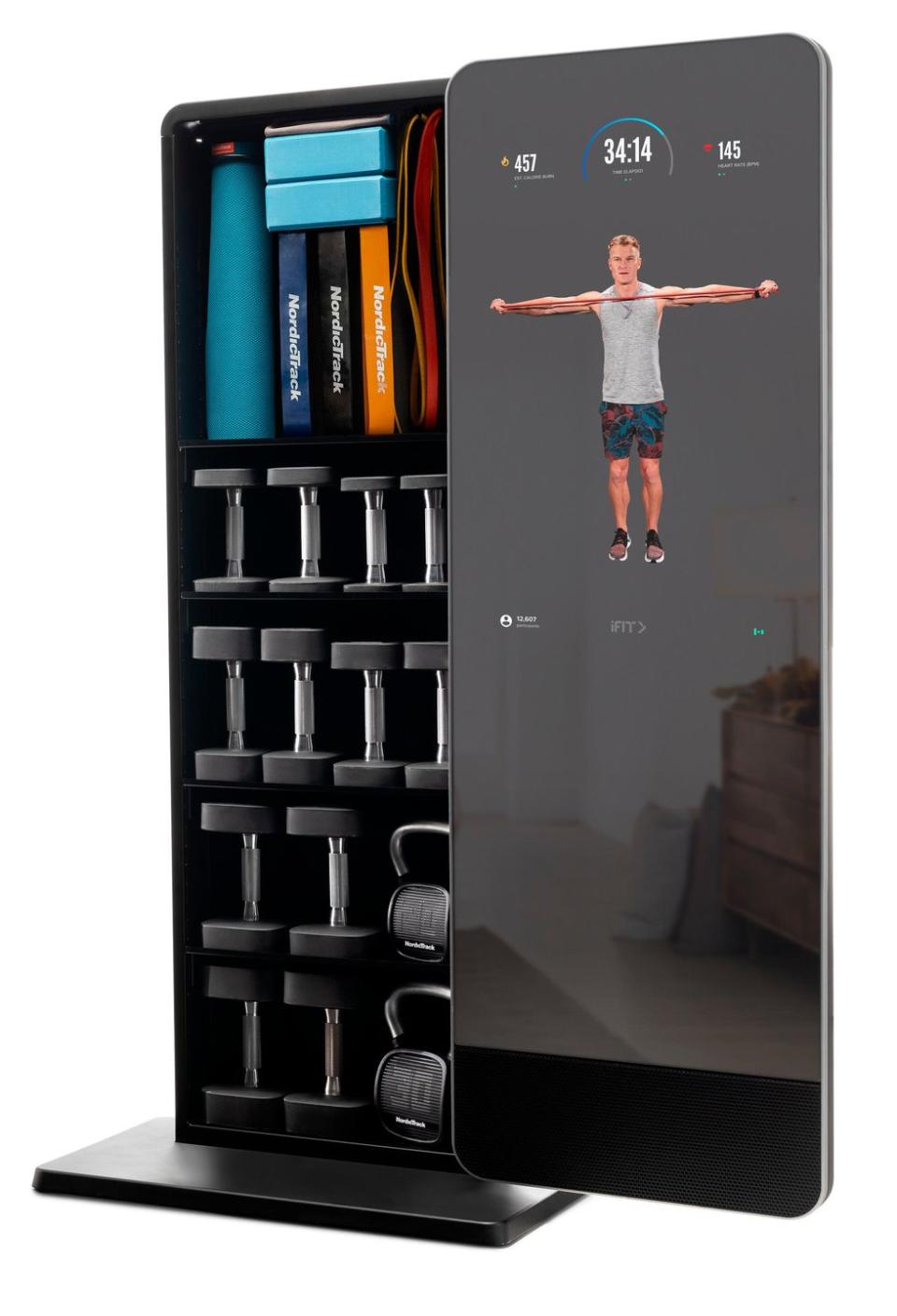
With the Vault, which links up with the iFIT-connected fitness platform, you get access to hundreds of instructor-led classes in disciplines like strength training, stretching, yoga, Pilates, and boxing.
If you prefer more structure to your weekly workout schedule rather than picking a different workout each day, the Vault and iFIT offer programs to follow day-by-day and week-by-week. From Strength Training 101 and Yoga for Beginners to Next-Level Strength Training and the Advanced HIIT Training Series, you get a full schedule tailored to your fitness level. That means you can also see your progress throughout the program and how far you’ve come by the time you complete that last workout.
While you don’t get direct feedback on form like you will with Tempo or Mirror, you still see the instructor demonstrating moves on theVault, so you have a guide to mimic. ($1,999 for the device without gear; $2,999 for the device plus dumbbells, kettlebells, resistance bands, and a mat; $39/month for iFIT membership)
Best for Budget Buyers: Tempo Move
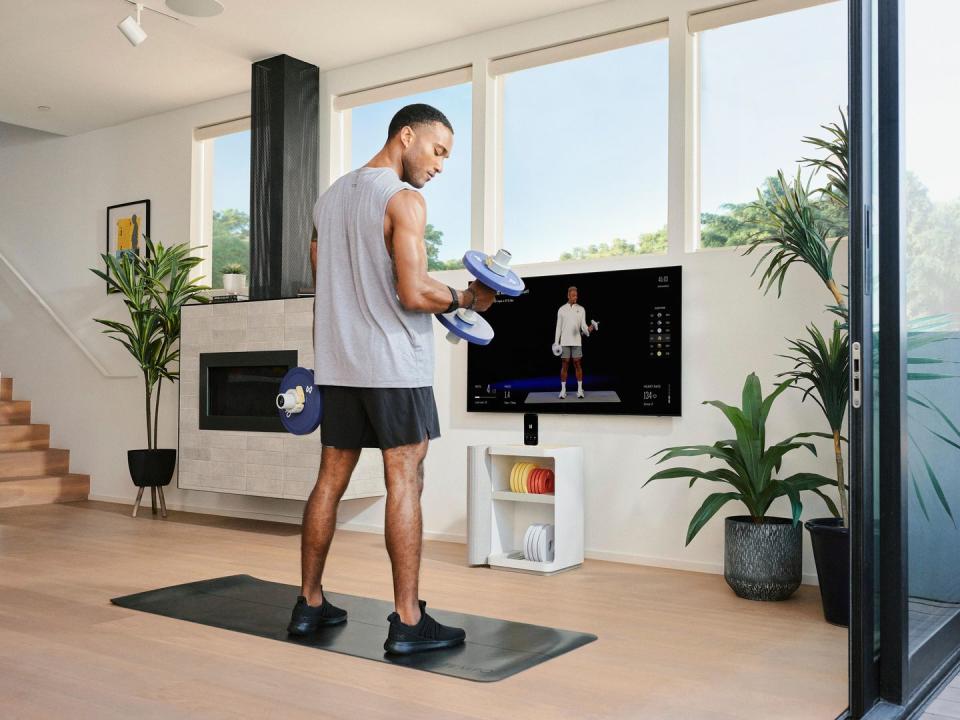
You can still buy the Tempo Studio device, which includes a video screen, stand, and dumbbells ($2,495), but the Move is a much more wallet-friendly option. Opt for this digital home gym if you’re searching for the smart training guidance that this type of gear provides, but without the high price tag.
With the Tempo Move, you get dumbbells (with a much smaller, portable stand to store them) and a plug for your iPhone XS/XR (or higher)—all for under $500. Instead of using the Tempo Studio camera, the Move system utilizes the camera from your phone and then connects to your TV for a bigger display. Together with the smart weights, the Tempo Move offers feedback on form, counts your reps, and gives advice on whether you should go up or down in weight, depending on your pace through each lift. By pairing with the app, you also have access to tons of workouts to follow, so you’re never lost on how to continue progressing your workouts. ($495 for device; $39/month for Tempo membership)

If you’ve already got the original Hypervolt at home, this newer model might not warrant splurging for an upgrade just yet. Still, this update brings subtle yet important tweaks. Hyperice reshaped the handle—it’s no longer cylindrical—and added a series of ridges along the neck. Combined with the lighter weight, we found that this makes for a more comfortable grip during extended sessions on tricky spots like your hamstrings.
You’ll be able to squeeze about 60 more minutes of juice from the battery and also get a deeper massage from the longer stroke length. (The top speed now maxes out at a lower rpm, but the overall experience is “punchier,” since the head extends farther out from the device with each oscillation.)
The very best parts of the Hypervolt haven’t changed. The second version still has three speeds powered by a whisper-quiet 60-watt motor, plus five interchangeable head attachments, and it pairs fast with a smartphone. For in-depth guided recovery sessions designed by experts, pair the device with Hyperice’s app and follow along to personalized routines—it’ll even automatically adjust the speed as you go. ($299)

The lightest version of the Nano, the Pursuit makes for a stable service underfoot while you’re strength training, and it has plenty of room in the toe box so you can plant your feet or push off when you need to. The shoe also has enough flexibility for moves like box jumps or adding in sprint intervals. Keep in mind the shoe is sized for unisex, listed under men’s on the site. ($150)


Best for Strength & HIIT: Sydney Cumming
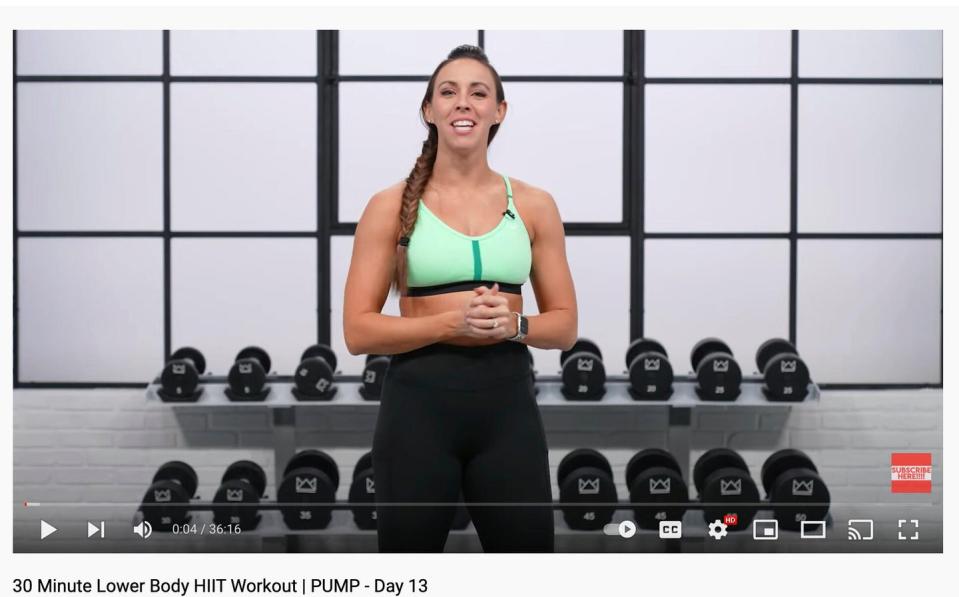
NASM-certified trainer Sydney Cummings has tons of workouts that build strength in your upper body, lower body, and core—or everything at one time. She’ll encourage you to pick up the heavy weights to get it done, but also give modifications for those who need ’em.
Each workout varies in length and intensity, often following circuit-style training, but Cummings always serves up what we want: upbeat motivation, creative exercises, tons of variety, and smart programming. And that’s why we love her.
She often has programs that stretch through the month, but you can easily mix and match workouts on her channel, choosing whatever fits your schedule and helps you meet your goals. Challenge yourself to a cardio interval class or follow her through weight training—either way, you’ll finish sweaty and proud. (Free)
Best for Yoga: Yoga with Adriene

Adriene Mishler’s voice brings instant calm when you press play on any of her sessions. And by the time you’re done with her full flow, your body will feel like it finally got the self-care it needs.
In addition to offering yoga sessions that just feel good, Mishler offers tons of options, with classes ranging from under 10 minutes to over 40 minutes. You can opt for a 30-day yoga challenge (she has several of those to help you create a consistent practice), or go for single sessions with a focus on mental improvements like stress relief, forgiveness, or grounding. The best part: She also has plenty of sequences curated specifically for runners, whether you want to stretch it out before you hit the road or after. (Free)
Best for Mobility & Injury Prevention: [P]REHAB
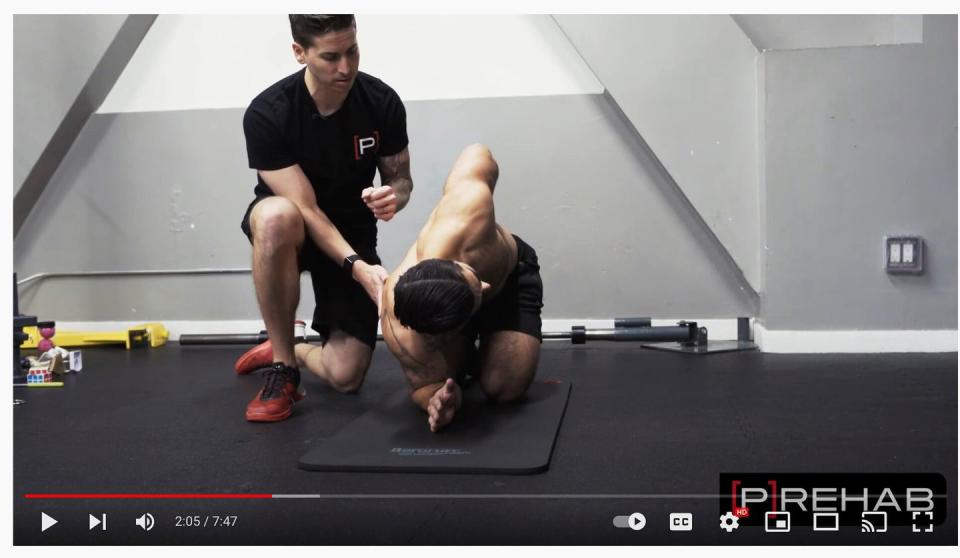
Every clinician curating workouts for the Prehab Guys has a doctorate in physical therapy and a certification in strength and conditioning. In other words, they know how the human body works and what exercises you need to be a stronger, faster runner while sidestepping injury along the way. Runners will definitely enjoy videos like the best warmup for athletes (and runners, specifically), the best exercises for runners to boost performance, how to deal with toe pain, plantar fasciitis pain relief, and exercises for piriformis syndrome (a.k.a. that literal pain in the butt). Press play to avoid aches when you feel them coming on, or when you just want some fitness knowledge. (Free)

Best Food to Eat Before a Run
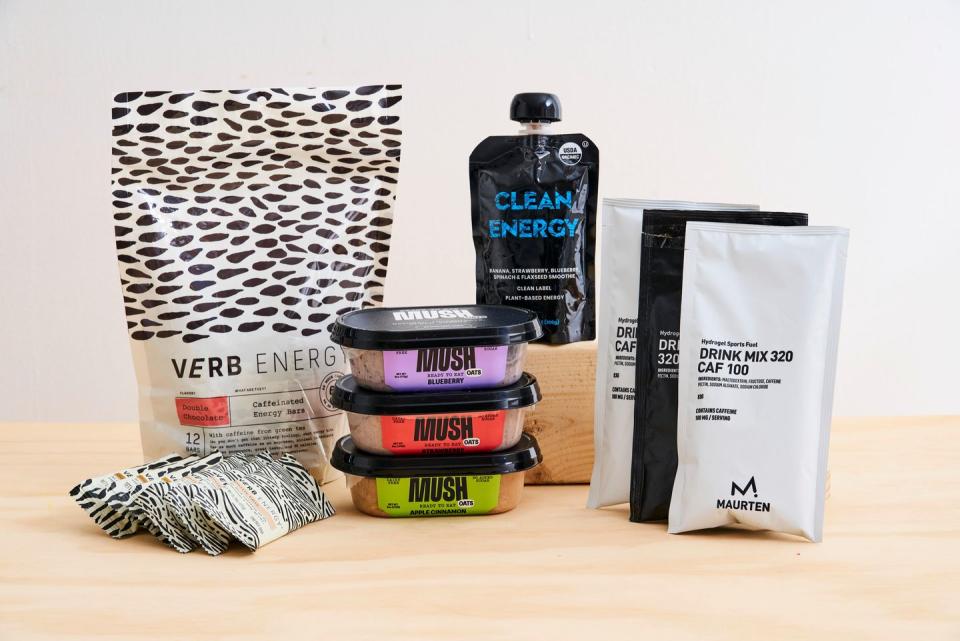
“Think of carbs as the first fuel choice,” says Megan Robinson, RD, a sports dietitian and RRCA-certified run coach who suggests easily digestible options. This helps prevent your muscles from fatigue, as they run on glycogen, she says. Robinson also recommends cutting back on fiber the day before a long run or big race and eating about two to three hours before you start running. If you have more time to digest, go for a meal with a little fat and protein, too. But if you’re running against the clock, focus on a smaller meal made of mostly carbs, or even just an electrolyte drink. You can also opt for something with a hit of caffeine. Granola bars will do, but here are a few upgraded grab-and-go options we love:
VERB ENERGY BAR for a quick hit of caffeine (it has as much as an espresso) and calories to perk you up right before a run (From $20 for 12 bars)
MUSH READY-TO-EAT OATS, made with whole ingredients and plenty of flavor options, and stored in a convenient package (From $39 for 6 servings)
CLEAN ENERGY SMOOTHIE, blended with a mix of fruits, veggies, and flaxseeds to give you important vitamins, minerals, and calories ($24 for 8 pouches)
MAURTEN DRINK MIX 320 for an easy-to-digest dose of carbs with a side of extra hydration and nutrients ($48 for 14 servings)
Best Food to Eat During a Run
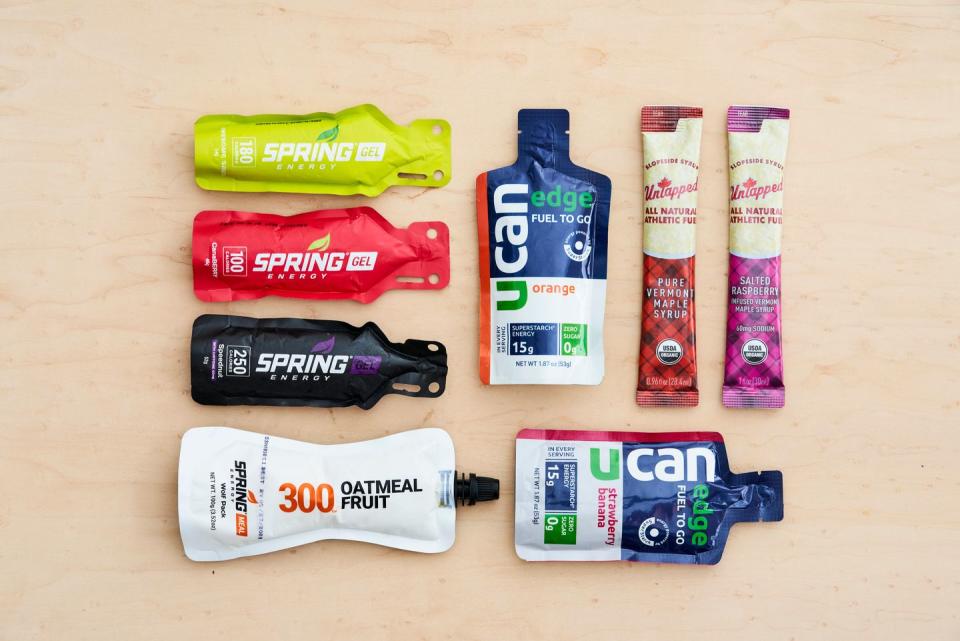
When you’re running for more than 90 minutes, you need nutrition, so start fueling around the 30- or 45-minute mark, says Lindsey Elizabeth Cortes, RD, a sports dietitian and the owner of Rise Up Nutrition. Aim for about 30 to 60 grams of carbs per hour, she recommends, and try to take it in slowly. The products that will work for you midrun depend on your flavor preferences and what your body can handle while you’re running, so it’s smart to test out a few options. “If you feel like you can’t eat on a run, try something and be patient with your GI system as you train it,” Cortes says.
Some tried-and-true options many runners turn to include Clif Bloks, Nuun Sport electrolyte tablets, Honey Stinger chews or waffles, GU Energy Gels, and SkratchLabs drink mixes. But if you have a sensitive stomach—or you’re going the distance in an ultra—you’ll want to look for some other options. Our favorites:
SPRING ENERGY GEL for those who want real, easy-on-the-gut ingredients or those going for more than four hours and also need a hit of protein and fat ($8 for 2 packets)
UCAN EDGE FUEL TO GO for slower-acting carbs that are easier to digest and keep blood sugar stable ($33 for 12 packets)
UNTAPPED ATHLETIC FUEL made of pure maple syrup, with the option for extra sodium, plus raspberry or cocoa flavors ($10 for 5 packets)
Best Food to Eat After a Run
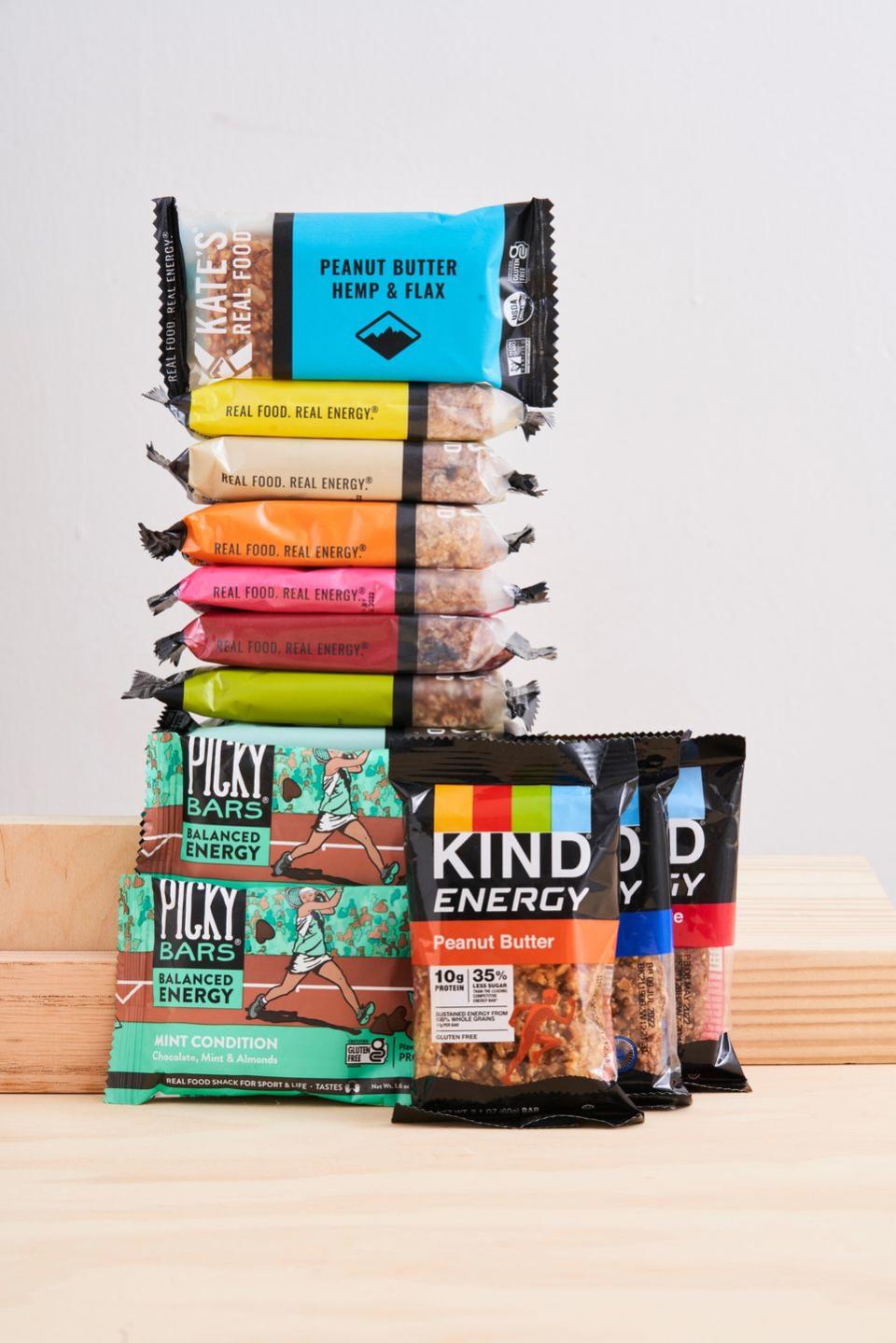
Aim to get in both carbs and protein to refuel your muscles and help build them back up after a run. Robinson suggests grabbing a snack with a 3:1 carb-to-protein ratio (or as close to that as you can get) and having it within about 30 minutes of your finish. A glass of chocolate milk will do, but so will these delicious bars, all made of wholesome ingredients:
KATE’S REAL FOOD BAR for simple, tasty, organic ingredients ($30 for 12 bars)
PICKY BAR, featuring a mix of flavors and lots of nutrients ($28 for 10 bars)
KIND ENERGY BAR, which hits that ideal 3:1 carb-to-protein ratio ($14 for 12 bars)
You Might Also Like

